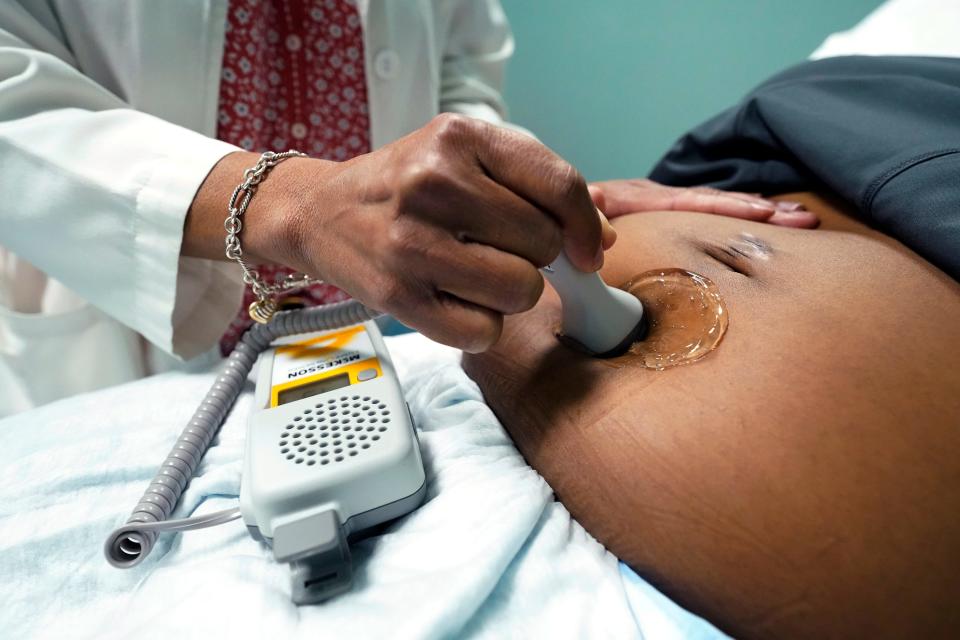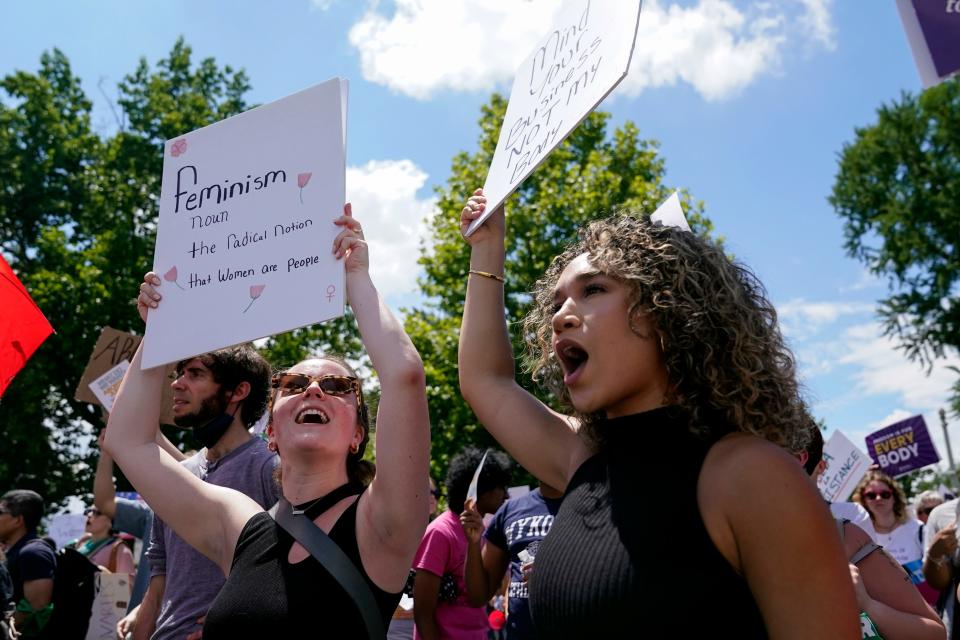Why is maternal mortality so high in the US? For Black and Native Americans rates are rising
Maternal mortality rates across race and ethnicity have more than doubled in the last 20 years, and the increase has been more profound among Black, Native American and Alaska Native communities, a study released this week found.
The research published by JAMA, the Journal of the American Medical Association, found that Black people consistently experienced higher maternal mortality rates, while Native American and Alaska Native people experienced a particularly rapid rise ‒ with state median mortality rates more than tripling over the last two decades.
“This is clearly a crisis in the United States,” said Dr. Gregory Roth, who co-authored the study and serves as the director of the cardiovascular health metrics program at the University of Washington.
The JAMA study analyzed maternal deaths between 1999 and 2019 for every state. Researchers determined maternal mortality ratios by state for five racial and ethnic groups based on the maternal deaths per 100,000 live births.

Dr. Allison Bryant, another co-author of the study and the associate chief health equity officer at Mass General Brigham, said the findings confirm what many already know: maternal mortality is on the rise and racial inequities continue to be prevalent.
The study reported that an estimated 1,210 maternal deaths took place in 2019, which is more than double the 505 maternal deaths in 1999. The steady increase in death during pregnancy, at delivery, or soon after in the U.S. is particularly troubling when compared to the declining maternal mortality rates in other countries, which already had low rates to begin with.
“We’re going in the wrong direction,” said Dr. Elizabeth Cherot, who serves as chief medical and health officer for March of Dimes, a maternal health nonprofit. “We remain the most dangerous developed country to give birth in, and when you look at this particular data, it’s getting worse – and it’s getting worse for Black and brown women.”
In each year studied, the Black population had the highest median state maternal mortality rate. The Native American and Alaska Native communities had the largest increase, rising from 14.0 in 1999 to 49.2 in 2019. Among the Black community, the median state maternal mortality ratio jumped from 26.7 in 1999 to 55.4 in 2019.
Roth noted that although maternal deaths can be caused by a wide range of factors, they are often a result of cardiovascular health issues. Therefore, maternal death can be a signal of high risk for various health problems in the communities where the deaths take place.
“We think that a maternal death occurring in a community is a canary in the coal mine, a marker or a signal of underlying risk in a community as well as the health risks for that individual,” Roth said.

Maternal mortality rates by state
The state-level breakdown also showed that maternal mortality rates are increasing in states that were previously considered to have been doing well, Roth said.
Maternal mortality among Black and Latina populations were the highest in states like New York and New Jersey, while Asians' maternal mortality ratios were highest in states like Wyoming and Montana.
The largest percentage increase over the two decades for the Black community was reported in Louisiana, while Latina women saw larger increases in states like Indiana and Georgia. For Native American and Alaska Native people, the largest increases were seen in Illinois, Florida, and Kansas.
Bryant noted that toward the last three to four years of the 20-year period studied, maternal mortality rates started to reach a plateau for most ethnic and racial groups except the Native American and Alaska Native populations.
“Looking at the last 20 years, we found that states that on average were having lower rates of maternal mortality for the entire population had quite high rates for at-risk subgroups,” Roth said.
Bryant urges states to dig deeper into the racial and ethnic inequities that exist within maternal mortality rates by listening to "the stories of American Indian, Alaska Natives who are giving birth" and understanding "what the challenges are to achieving optimal health before, during, and after pregnancy,” Bryant said.
Why is maternal mortality so difficult to track?
Roth noted that although maternal health has long been a crisis in the United States, the country lacks consistent data on changes in maternal death rates for detailed groups within states.
Efforts to improve the tracking of maternal mortality have often been undertaken at the state level through committees made up of experts who collect all available data after someone dies during or following a pregnancy.
However, Roth said not all states have these committees. Those that do often don’t report their findings regularly or collect them consistently. Researchers in the recently published JAMA study chose to rely on death certificates, which are collected uniformly across all states, to gather their data.
“Our work is the first to look at racial and ethnic groups within states over time,” Roth said. “By using the death certificate data, we were able to produce this really long trend to show exactly how states and populations within states are varying over time.”
Although the study only looked at data up to 2019, both Roth and Bryant pointed at recently released data by the US Center for Disease Control and Prevention, which shows that COVID-19 likely exacerbated maternal mortality rates, particularly for the Black population.
“If we took a line and guessed what would have happened from the lines that drew in our study, we probably would have seen an inflection upwards in most groups in most states due to COVID-19,” Bryant said.
According to Roth, addressing the rising maternal mortality rates require “an approach that ties together the health care that women need before, during and after their pregnancy with the public health interventions that their communities need.”
This would require connecting pregnant women to health services beyond the care of their pregnancy, like affordable primary care and mental health services.
This article originally appeared on USA TODAY: Rising maternal mortality rate in US hits Black, Native Americans hard

